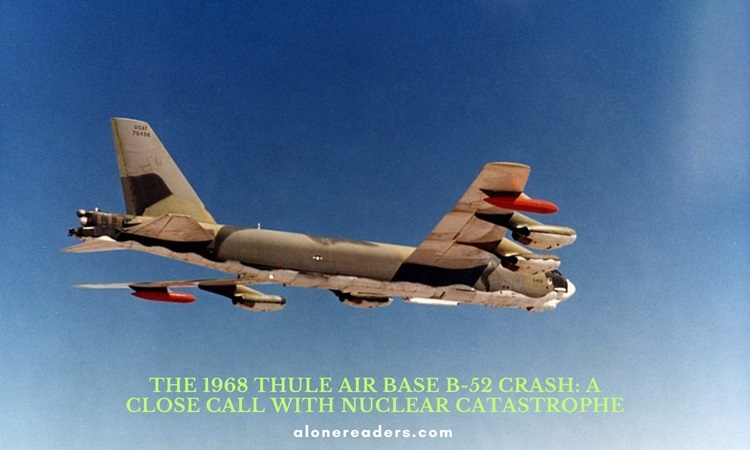
On January 21, 1968, in the midst of the Cold War, a harrowing incident unfolded that highlighted the perils of nuclear armament. A United States B-52 bomber, on a routine airborne alert mission, met with disaster over the frigid expanse of Greenland. Carrying four hydrogen bombs, the aircraft crashed onto sea ice near Thule Air Base, causing immediate concern due to the potential for a nuclear catastrophe.
The B-52 Stratofortress, a cornerstone of the United States' strategic bomber fleet during the Cold War, was part of Operation Chrome Dome. This operation involved maintaining a fleet of bombers in the air at all times, ready to respond to any Soviet attack. The aircraft that met its fate near Thule Air Base was on one such mission, serving as a grim reminder of the constant brinkmanship that defined the era.
As the bomber approached Thule Air Base for a routine refueling, a fire broke out in the cockpit, quickly becoming uncontrollable. In a desperate attempt to save the crew and the aircraft, the pilot sought to execute an emergency landing. However, the severity of the situation forced the crew to eject, leaving the plane to crash onto the sea ice below.
The impact of the crash was devastating. The aircraft was obliterated, and its payload of four nuclear weapons was subjected to intense heat and explosive forces. This led to the dispersion of radioactive material over a wide area, although, by some miracle, there was no nuclear detonation. The conventional explosives within the bombs detonated, rupturing the nuclear cores and spreading plutonium and other radioactive materials across the crash site.
The cleanup operation, codenamed "Project Crested Ice" but more commonly known as "Dr. Freezelove," was an immense and challenging task. It involved hundreds of Danish and Greenlandic workers, as well as American military personnel, working in the harsh Arctic conditions to recover debris and contaminated ice. The process was fraught with difficulties, from the extreme cold and limited daylight hours to the dangers posed by the radioactive contamination itself.
The geopolitical implications of the crash were significant. Greenland, an autonomous territory of Denmark, was host to Thule Air Base under a U.S.-Danish agreement. However, the presence of nuclear weapons on the base, a violation of Danish policy, strained relations between the United States and Denmark. The incident also raised questions about the safety and morality of the nuclear arms race, with public outcry and international criticism following in its wake.
In the aftermath, the United States made significant changes to its airborne alert practices, eventually discontinuing Operation Chrome Dome. The incident at Thule also spurred dialogue and agreements on the safety and handling of nuclear weapons, contributing to a more cautious approach in their deployment.
The environmental impact of the crash was long-lasting. Despite extensive cleanup efforts, traces of radioactive contamination remained in the area, posing a continuing concern for environmentalists and local populations. Studies conducted in subsequent years have monitored the site, assessing the ongoing effects of the contamination on the Arctic ecosystem and human health.
The Thule Air Base B-52 crash serves as a poignant reminder of the razor's edge upon which the world balanced during the Cold War. It illustrates the inherent dangers of nuclear weapons, not just in their potential for deliberate use, but also in the accidents and unforeseen events that can accompany their deployment. The incident stands as a testament to the precarious nature of nuclear deterrence and the importance of stringent safety measures in handling such formidable weapons.
In conclusion, the B-52 crash near Thule Air Base in 1968 is more than just a footnote in Cold War history. It encapsulates the fears and risks of an era where nuclear annihilation seemed an ever-present threat. The lessons learned from this incident continue to inform policies and practices regarding nuclear weapons, serving as a cautionary tale for future generations about the fine line between deterrence and disaster.